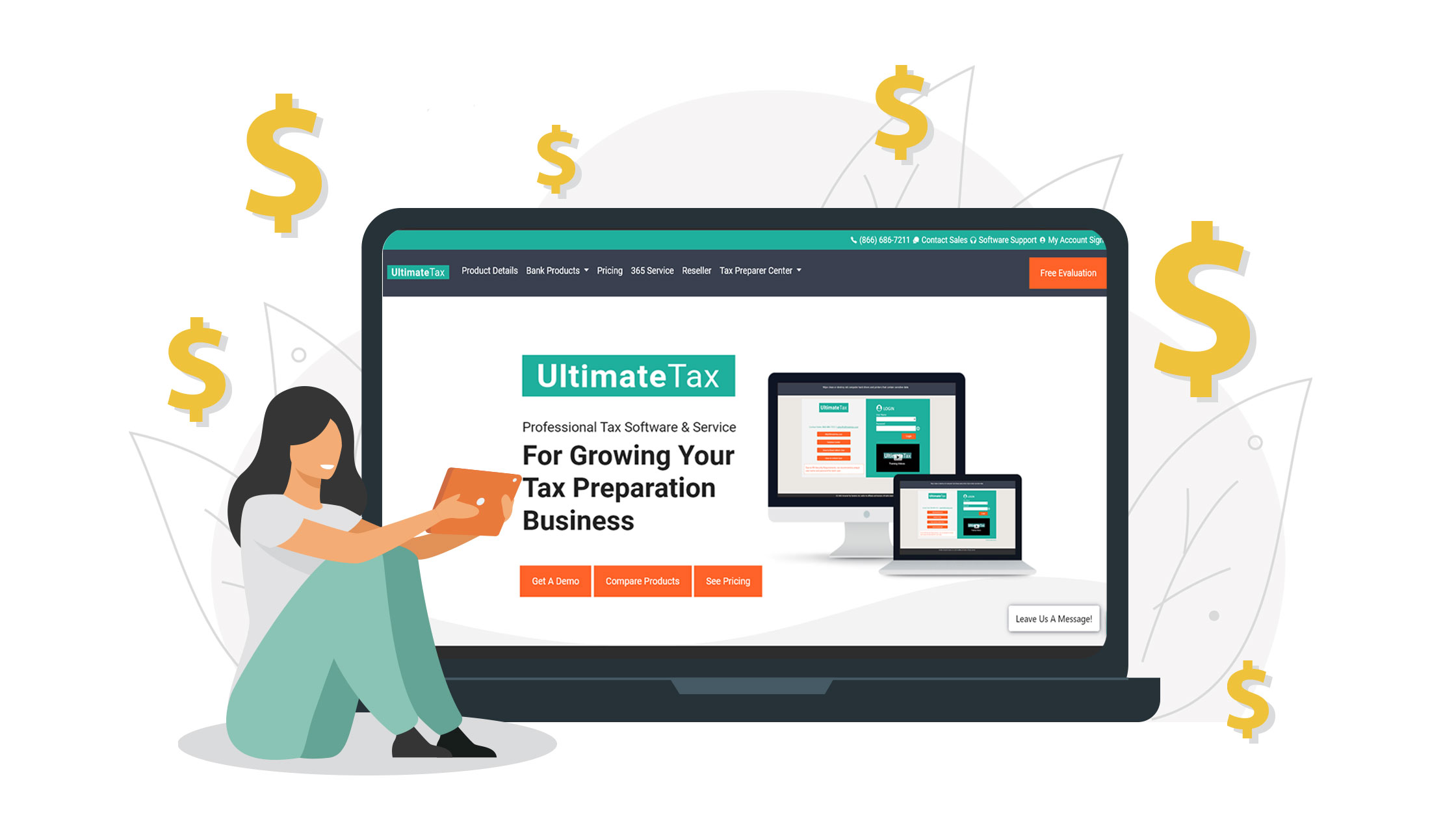
One of your responsibilities as a tax professional involves prepping tax clients for the coming tax season. While you are being paid to handle their tax matters so they don’t have to do it themselves, you can provide a more effective service if both of you are on the same page.
You want meetings with clients to be productive. It will help when the customer is familiar with the features of a tax return and the steps to take in preparing it. You will be able to discuss the client’s return with less risk of miscommunication or misunderstanding. That will help you avoid any mistakes in preparing the tax return.
You should also prep clients on your tax office’s policies and procedures. They should be aware of the way you do things.

First Steps in Tax Client Prep
Set customer expectations as soon as possible. They need to know what they are getting—and also what they are not getting. Some clients expect the moon! And that can cause difficulties for you. Prevent any issues by clearly expressing what your services include and what they do not include.
Agree on a scheduling and communications system. You need to know the best way to get a hold of a client. Do they prefer voice calls or text messages? How do they feel about email? Online message platforms? Video conferencing? Find out what clients are comfortable with and try to be flexible in the options you give them.
Of course, you also need to let them know how best to get in touch with you! If you’re an email warrior, tell them to send you an email message if they want to get a quick response. Alternatively, you could set up a client portal that they can log into and send messages to you. They can also use the portal to upload any electronic documents that you need them to provide.
(If you’re interested in the client portal idea, check out the ProClient office management system. It makes setting up a portal very easy, and offers many other helpful tools for organizing your workflow.)

Educate Your Clients Using Handouts and Videos
You don’t want to spend a lot of time explaining tax form requirements to your customers. What you can do is create handouts that will explain what they need to know. Keep the handouts simple and easy to follow.
You can send the handouts in the form of electronic files to your customers. But if you prefer to use printed handouts, those work very well, too.
Some clients prefer watching an educational video over reading a handout. Consider shooting a short video where you discuss key facts about income or business tax compliance. A video like that will be more than a good teaching tool. It will also help you improve your engagement with customers.
You might not want to go to the trouble of shooting a video. That’s understandable. There are plenty of educational videos online that you can share with your customers. It’s as easy as sending them a YouTube link.

Free IRS Resources You Can Share
Another thing you can do is direct customers to the official IRS website. The IRS.gov site offers many free resources that provide useful information about taxation rules and requirements. What’s more reliable than getting facts straight out of the horse’s mouth? If it’s an official IRS resource, it’s got to be correct.
One key IRS resource, Publication 5349, provides a free digital handout that you can send to your customers. It provides quick summaries of the steps to take in preparing to file the next year’s taxes.
The information included on IRS Publication 5349 covers the following topics:
- ITIN renewal
- Tax refunds
- Refund interest
- Electronic filing options
- Adjusting the withholding tax
- Getting a tax payment estimate
- Eligibility for credits and deductions
- Unemployment compensation
- Protecting your private data
The latest version also discusses the 2020 Economic Impact Payments (EIP) and how to be eligible to claim a Recovery Rebate Credit. This information may still prove helpful over the next taxation year.
You can download Publication 5349 from IRS.gov right here. (Note that this will download a file in the PDF format.)

A Tax Prep Checklist from the IRS
Another excellent handout available on IRS.gov, Publication 5349 is captioned “Year-round tax planning is for everyone.” It is a simple and attractive compilation of tips to make tax planning easier for anyone.
The friendly design of IRS Publication 5349 is highly appealing. It almost makes tax planning look cheerful!
One of the key tips on Publication 5349 encourages people to organize tax records wisely. It suggests the use of a record keeping system that keeps essential documents together in one place. Publication 5349 lists examples of such important documents: year-end forms W-2 from employers, Forms 1099 from banks, other income statements and records, and documentation of virtual currency transactions.
You might want to use Publication 5349 as a guide for making your own checklist of documents to solicit from your customers. Ideally, you’ll want customers to start organizing their records long before they begin talking to you about tax preparation and planning.
IRS Publication 5349 also provides a handy tax prep checklist. It’s a quick reference guide to the essential requirements for completing a tax return. You’ll want your customers to take note of these items, and have them on hand when they come to you for tax preparation.
Download Publication 5349 here.
A Tax Prep Checklist and Tax Compliance Kit for Your Customers
You can use IRS Publication 5349 as a starting point for compiling your own tax prep checklist. You might actually want to create a variety of checklists that cater to different clients’ needs. You can have a checklist for individual income tax payers, one for business tax clients, one for charities or nonprofits, one for international taxpayers, and so on.
Your checklist can be a lot more comprehensive than the one detailed in Publication 5349. That’s meant to be a quick reference covering the most common requirements. You can include the following items on your checklist for individual taxpayers:
- The previous year’s individual income tax return
- Social Security Numbers and birth dates for all family members
- IDs with photo references (driver’s licenses, passports, military IDs, etc.)
- IRS Schedule K-1 (Form 1065) for partnership income
- Banking records and other financial records
- W-2 forms from their employers
- Child care provider EIN
- IRS 1099 forms
- Form 1098 (Mortgage Interest Statement)
- Other property tax records and expense info
- Receipts for expenses (medical, childcare, etc.)
- Charitable donation receipts (if applicable)
For business taxpayers, you’ll want to include these items:
- The previous year’s corporate tax return
- Employee Identification Number (EIN)
- Profit and loss statement
- Partnership agreements (if applicable)
- Change in ownership information (if applicable)
- Banking records and other financial records
- Charitable donation receipts (if applicable)
- Receipts for capital asset purchases
When you’re building a tax compliance kit for your customers, be sure to include some reference guides to new developments relevant to the tax year in question. This year, you’ll want to provide easy-to-digest information about the American Rescue Plan Act of 2021 and the Consolidated Appropriations Act 2021.
Multilingual Resources for Your Customers
What if you have customers who are primarily speakers of Spanish or another foreign language? The IRS does have informational resources available in a limited variety of foreign languages. You can direct your customers to these IRS resources.
One page you can show them is Steps to Take Now to Get a Jump on Your Taxes. This page is in English, but it has links to translations in other languages including Spanish, Chinese, Korean, Vietnamese, and Russian.

Life Events
Every customer is different, and you should take an individual interest in each and every one. That includes having awareness of significant life events they have experienced or they are going through.
Life events can have major impacts on their tax returns! So it’s simply good service to know what your client has experienced and how to apply that to preparing their tax returns. Impactful life events (for taxes) include:
- Marriage
- Separation or divorce
- Having a child
- Starting a new career
- Loss of employment
- Bankruptcy
- Disaster
- Major health problems
- First-time home ownership
- Moving to a new address
- Death in the family

You can talk to your customers directly about life events, emphasizing their relevance to doing their taxes. These can be sensitive topics, however. If you feel that the client will not be comfortable discussing a life event with you, send them to this resource on IRS.gov: Managing Your Taxes After a Life Event

Service and Support Tips
After you have formulated your own tax prep guidelines for your customers, discuss them with your staff. Of course, your customer service team should know these guidelines. They should be able to direct clients to the IRS resources mentioned here, and any others you want to include.
It’s a good idea to make the information available in a variety of forms. If you have a website, you can include articles that explain the tax preparation guidelines and link to the IRS resources. Make them a part of your online support documentation.





